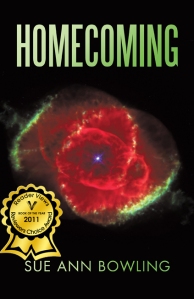This post has been updated and reissued with new photographs here.
Two dilution genes are so rare that their effect on all base colors is not even well understood.
Mushroom has been found in only a few breeds: Shetland Pony, Haflinger and possibly the American Quarter horse. At first glance, it looks like silver dapple acting on a black background. The body color is a flat beige or sepia, and the mane and tail are lighter than the body. But mushroom horses, unlike silver dapple, are very rarely dappled. Further, their eyelashes normally remain dark.
DNA tests show conclusively that these horses do not carry silver. Even more surprising, gene tests indicate the underlying color is not black, but chestnut.
Mushroom has been shown to be due to a recessive gene, tentatively identified as the mushroom allele at the mushroom locus. The effect on base colors other than chestnut is at the present time unknown.
It is difficult to know how common the mushroom allele is, partly because most mushroom horses are misidentified as silver dapples.
The other rare dilution as been found in two closely related Arabian horses. Their pedigrees suggest a recessive gene, and their appearance suggest that the effect of the double recessive is similar to that of a single champagne gene, though there is less effect on red pigment or skin color. Eye color is lighter than normal. However, this is based on only two horses.
A single horse can have any two alleles at each locus. Thus a horse can easily be a palomino and a dun (linebacked palomino) or a a dun and a silver dapple on a black background (silver grullo.) Telling which genes are actually present based on the appearance of the horse, however, can be a major problem without DNA testing. In many cases, a horse with multiple dilution genes will just look cream, or even white.
We can summarize the loci and the alleles we have discussed previously, with links to photos, as follows:
Agouti locus: This has been shown to be the agouti signalling protein (ASIP) locus. The exact number of alleles is uncertain, but probably include wild-type bay (some red on lower legs), bay, seal brown (black with some red shading) and non-agouti (black.) More red is dominant to more black in this series. Most blacks, and particularly most intense blacks, are due to non-agouti.
Extension locus: This has been shown to be the melanocortin one receptor (MS1R) locus. There are three alleles. The most dominant first, they are dominant black, wild-type, and recessive red (chestnut). This locus determines whether black pigment can be produced. Two copies of the recessive red allele or one of the dominant black allele completely hide whatever is present at the agouti locus. Dominant black is relatively rare and still subject to some controversy.
Cream locus: This has been shown to be the membrane-associated transport protein (MATP) locus. The alleles are (in order of dominance) cream, wild-type, and pearl. Red pigment is affected far more than black, especially if the horse has one wild-type gene. Palomino, buckskin and smoky black are the result of a single cream allele with the other being wild-type. Two cream alleles give cremillo, perlino, or smoky cream, which cannot always be told apart. The pearl allele is a relatively recent discovery, but it appears to be at the cream locus.
Dun locus: As of 2009 the locus had not been found, so no DNA test was available. The alleles are dun (wild-type) which is dominant to non-dun. Both red and black pigment are affected, and in addition dun produces a dorsal stripe and other variable striping effects. There’ll be a dun, specifically a grulla, in my upcoming novel, Tourist Trap.
Champagne locus: This has been reported to be a mutation in Exon 2 of SLC36A1, and a gene test is available. The alleles are Champagne (dominant) and wild-type, and it does not matter whether one or two doses of Champagne are present. The effect is to dilute both red and black, but a single dose of champagne causes more dilution of black on the body than does a single dose of cream. Eye and skin color are also affected.
Silver Dapple locus: This has been shown to be the pre-melanosomal protein 17 (PMEL17) locus. The alleles are silver (dominant) and wild-type. This gene dilutes black to a variable extent, but has little or no effect on red, and appears to dilute the coarsest hairs most strongly. Like champagne, it is a simple dominant.
I may take Christmas off, but I’ll be back with the genes that produce interspersed white hairs: grey, roan, frosty, white ticking and roaned.







 Buy Homecoming from iUniverse
Buy Homecoming from iUniverse
















2 Trackbacks / Pingbacks for this entry:
[…] by sueannbowlingauthor — Leave a comment January 24, 2011 Any color horse, full color, dilute, or with intermixed white hairs, can have white body markings. These have long been recognized as […]
[…] Another Dilution Gene in Horses 12/5/10 Silver Dapple – Another Dilution Gene in Horses 12/12/10 Two Rare Dilutions and a Summary of Dilution Genes in Horses 12/19/10 The Genetics of White on Horses 12/27/10 The Grey Gene in Horses 1/3/11 The Roan Gene in […]